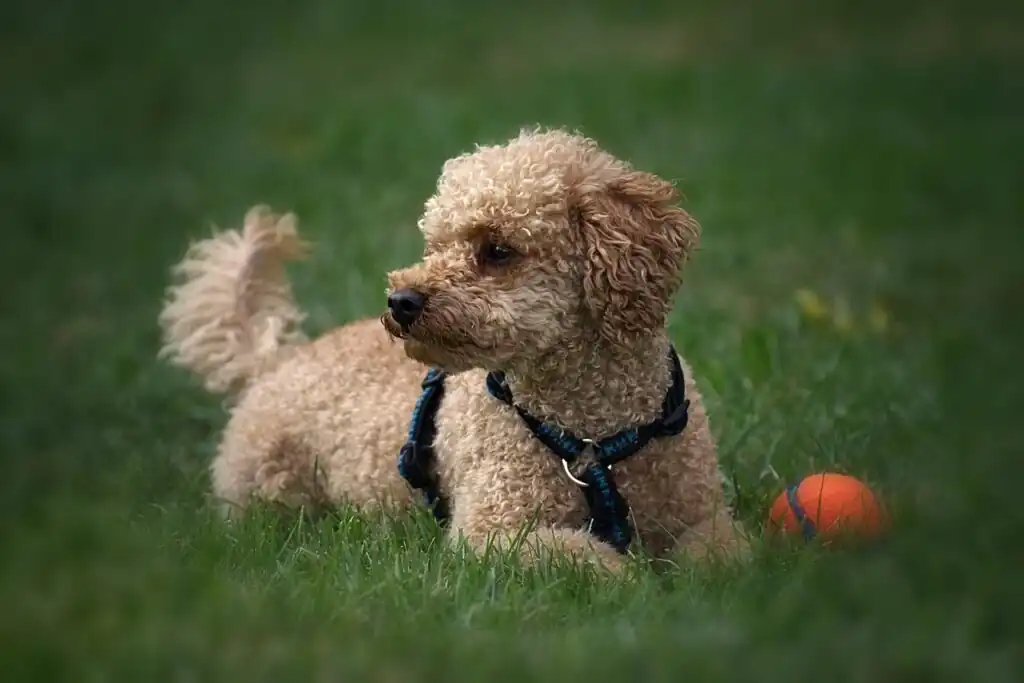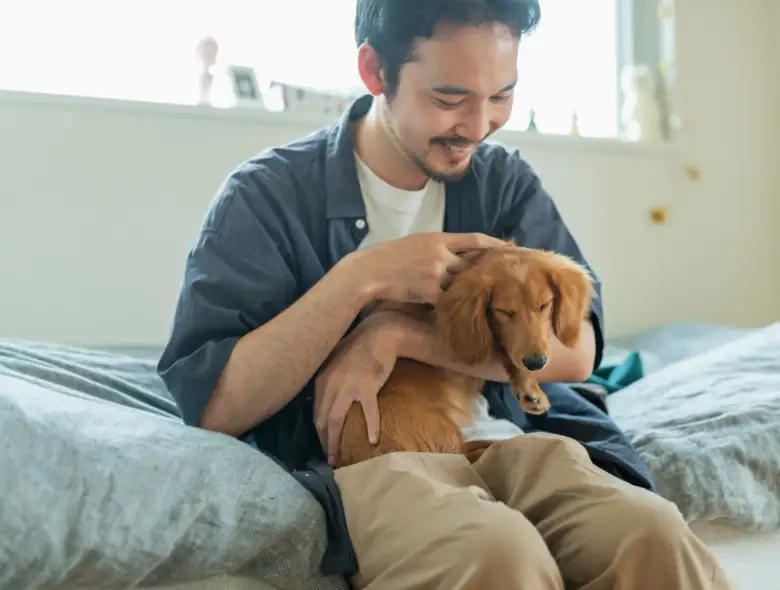Many people who couldn’t keep a dog at their parents’ house and have been thinking about getting one may be thinking, “I want to live with a dog even though I live alone” and “I want to know how much it actually costs.”
However, some may be worried about whether they will be able to take care of a dog because they tend to be away at work during the day.
In this article, we’ll cover key considerations before getting a dog while living alone, including necessary costs and care tips. Make sure to review these points beforehand!
Village House offers a wide selection of pet-friendly properties. If you’re looking for a place to live comfortably with your dog, be sure to check out our website.
Checklist Before Getting a Dog When Living Alone

Even if you live alone, you can keep a dog as long as you meet certain conditions. However, if you cannot meet the following criteria, it is better not to keep a dog.
- Be able to spend time and money on your dog
To keep a dog, you need to regularly provide pet food and toilet supplies. You are also required to vaccinate your dog against rabies once a year.
Since dogs don’t sweat like humans, they are at risk of heatstroke because they can’t regulate their body temperature as effectively. To prevent this, you’ll need to keep the air conditioner on during the summer, which may increase your electricity bill.
- Create a comfortable environment for your dog
If you have a small dog, a studio or 1K apartment should be sufficient. However, for larger dogs, a 2DK or larger space is recommended. Additionally, ensure a comfortable environment for your dog, such as using an air conditioner to regulate the room temperature.
- Responsibly train your dog
When you live alone, your dog will have to stay at home while you are away. It is essential to responsibly train the dog to avoid unnecessary barking and to teach it to use the toilet properly. Without proper training, it can be challenging to keep a dog while living alone.
- Walk your dog every day
Daily walks are necessary for dogs. The amount of exercise varies depending on the dog’s size and breed, but moderate exercise is essential. If you’re worried that you might be busy with work and won’t be able to take your dog for a walk every day, it might be better not to get a dog.
- Clean frequently
When living with a dog, you need to clean up waste and shedding frequently with a vacuum cleaner or lint roller. To prevent complaints from neighbors about odors, make sure to clean regularly and maintain good hygiene.
- Not allergic to dogs
If you don’t know whether you are allergic to dogs, consider getting an allergy test before getting a dog. If you are allergic to dogs, you may experience health issues such as sneezing, runny nose, itchy eyes, or hives.
The cost of allergy tests varies by hospital but typically ranges from 3,000 to 5,000 yen. Incidentally, if you have allergies to animals like cats or feathers, you are more likely to be allergic to dogs as well.
How Much Does It Cost to Own a Dog?

The cost of adopting a dog varies depending on its breed. In this section, we will introduce the costs necessary beyond the cost of adopting a dog.
| Food and water containers | Approximately ¥2,000 |
| Food and treats | Approximately ¥5,000 |
| Toiletries | Approximately ¥4,000 |
| Cages and pet enclosures | Approximately ¥15,000 |
| Carrier bags | Approximately ¥10,000 |
| Beds | Approximately ¥3,000 |
| Toys | Approximately ¥1,000 |
| Leashes (for small dogs) | Approximately ¥2,000 |
| Brushes | Approximately ¥2,000 |
| Dog shampoo | Approximately ¥2,000 |
| Initial vaccination costs | Approximately ¥3,000~¥7,000 |
| Dog registration fee | Approximately ¥3,000 |
| Total | Approximately ¥52,000~ |
In addition, all dogs aged 3 months and older are required to receive a rabies vaccination once a year. Although combination vaccines are not mandatory, it is advisable to receive them regularly to prevent diseases.
Things to Know about Caring for A Dog

- Prepare a dedicated space for the dog
- Allocate time for exercise and walks
- Play together with toys
- Clean up after toileting
- Manage diet according to its growth
- Grooming for disease prevention and odor control
- Adjust indoor temperature
- Consider neutering or spaying
- Safety measures such as securing furniture and electrical cords
- Preventing escapes
- Use a pet camera for monitoring when you are away
Pet-Friendly Apartments: Key Features for Living Comfortably with a Dog

- Look for a rental property that is pet friendly
If you plan to keep a dog, look for rental properties that allow pets. When searching for a rental property suitable for living with pets, check for aspects such as sunlight, ventilation, space for toileting and cages, and areas for washing the dog’s feet.
- Enough space in the room even with a cage
A cage needs to be large enough to fit a dog’s bed, food, water, and a litter box. Cages for small dogs are generally at least 90cm long and 60cm wide, so you will need a room of at least 6 tatami mats.
- Nearby parks and dog runs
It’s convenient to have parks where you can play with your dog and a walking course nearby. Additionally, having a dog run or a pet-friendly cafe nearby makes it fun to go out with your dog on the weekends.
- Nearby veterinary clinics
It’s important to know nearby veterinary clinics for regular check-ups and emergency care for your dog. Veterinary clinics provide health check-ups, vaccinations, and consultations for neutering, as well as the opportunity to ask questions about raising your pet and its diet, so it is reassuring to have one nearby.
- Choose a building with high soundproofing
To avoid issues due to dog barking, choose properties with high soundproofing like reinforced concrete (RC) structures. Wooden or steel-frame structures have poor soundproofing and are more likely to cause complaints from other residents.
Dog Breeds that are Easy to Raise Even if You Live Alone

Pomeranian
The Pomeranian is an ultra-small breed, measuring 18-22 cm in height and weighing 1.8-2.3 kg, and is considered long-lived with an average lifespan of 12-16 years. They are small, cute, energetic, and friendly, but they tend to bark frequently, so daily exercise and walks are necessary.
Additionally, they get lonely easily, so if you live alone, it is important to train them to be at home alone. If you train them properly from when they’re a puppy, they are a breed that is suitable for people living alone.

Toy Poodle
The Toy Poodle is a small breed, with an adult weight of around 3-4 kg and height of around 25 cm. They have an average lifespan of about 15 years. They are sociable and highly intelligent, making them easy to raise even for people living alone, but they may get easily stressed around strangers.
They are highly athletic, so they need plenty of exercise and time to interact with others. They get lonely easily and don’t like being left alone, so it’s important to train them from when they’re a puppy with affection while fostering their independence.

Chihuahua
The Chihuahua weighs about 1.5-3 kg and stands about 12-20 cm tall, with an average lifespan of around 14-16 years. They are sensitive to cold, so indoor temperature control is necessary. Due to their small size, they require less exercise and food, and their independent nature makes them suitable for people living alone.
However, Chihuahuas are relatively aggressive towards their owners and do not respond well to training, so consistent discipline and establishing household rules are important.

Miniature Schnauzer
The Miniature Schnauzer is a popular breed with a body length of approximately 30-35 cm, weighing around 4-8 kg, and an average lifespan of about 12-15 years. They are gentle and popular as family dogs. They are cheerful and active and also enjoy playing with their owners, so brushing and training with rewards are effective.
They are easy to train, making them suitable for people living alone. However, they can bark and become aggressive towards strangers and other dogs, so it is important to train them from 1-3 months of age.

Shih Tzu
The Shih Tzu is a popular breed, standing approximately 25-28 cm tall, weighing around 5-8 kg, and having an average lifespan of about 13-16 years. They are affectionate and can be left alone without any problems, making them suitable for people living alone. Males, in particular, are obedient and cuddly. They are not very aggressive, making them suitable even for first-time dog owners. They require minimal exercise and play, making them ideal for those who prefer a relaxed lifestyle.
At Village House, we offer a wide selection of properties that allow pets. If you’re looking to live with your dog but having trouble finding a suitable place, please feel free to consult with us.
Related articles:
- Owning Pets in Japan
- Pet Friendly Rental Properties – Is It Possible to Get a Pet in the Middle of Your Lease?
- Live Happily with your Pets in a Rental Apartment
- Top Pet Friendly Apartments
- Rental Properties from the Perspective of Pet-owners

Hello, I’m Machiko Doi, a freelance writer who writes about housing and living in Japan.
I live in an 80-year-old house that I inherited from my grandparents along with my two shelter cats and daughter.
We live a relaxed life while repairing the house.
I like to cook vegetables from the garden and fresh fish caught by my father, and enjoy them with cold beer on a hot day or hot sake on a cold day.



